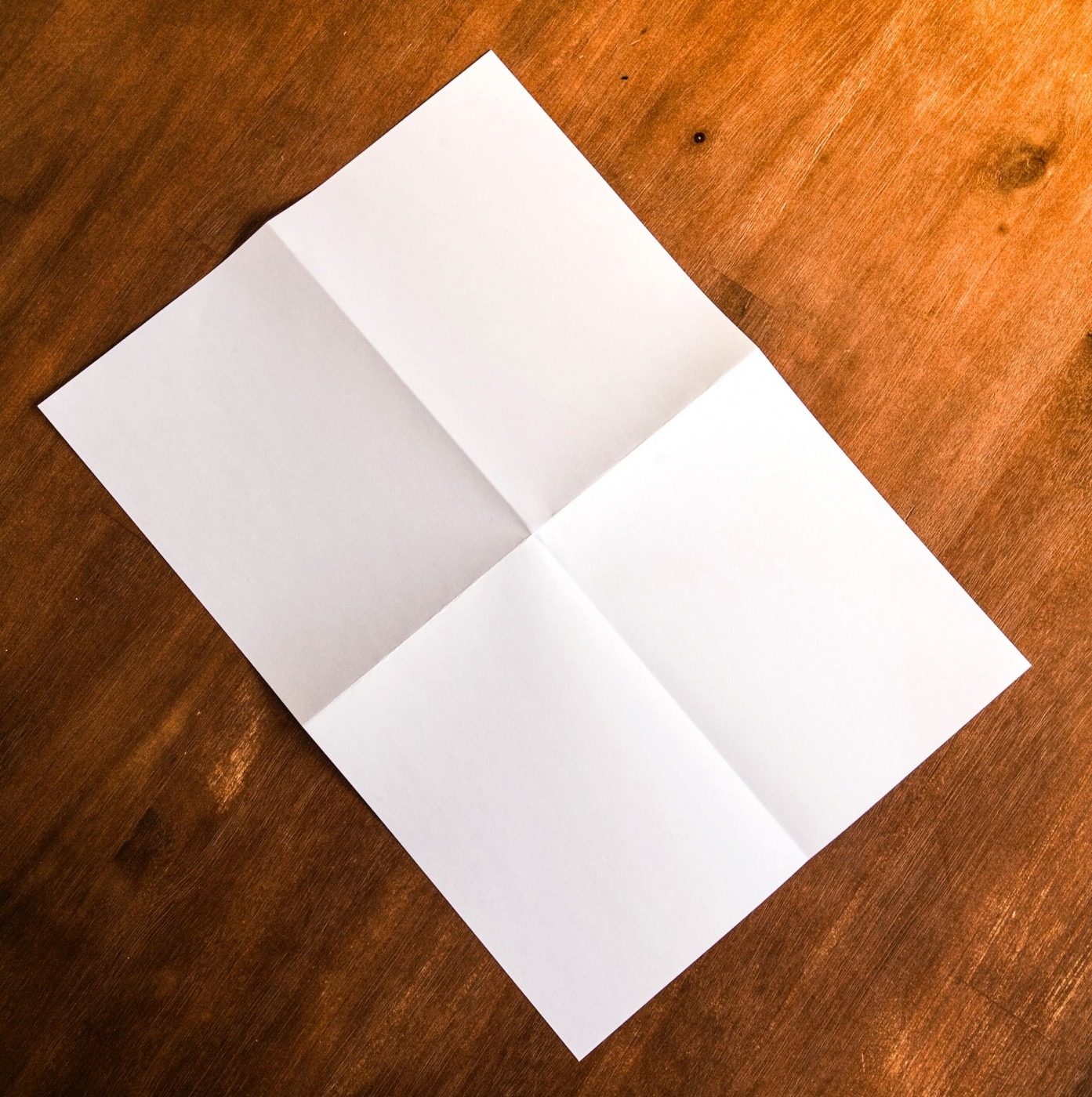How many times can you fold a piece of paper?
It’s one of those questions that is fundamentally simple-sounding, and one that we’ve surely all asked ourselves at one point – how many times can you fold a piece of paper? We all think we know, but there’s some fascinating science underpinning the answer – so let’s dig in and do some folding.
Let’s start with the conventional answer: ask most people this question, and you’re likely to wind up with ‘seven’ as the response. This is often linked to a practical attempt to actually fold a sheet of A4 paper. If you do this, it’s a challenge to even reach seven, because the paper rapidly gets too thick and too small to fold. This is related to a concept known as ‘geometric growth’, and the effects are dramatic – if you were able to fold a piece of A4 paper in half 26 times, it would go from what we think of negligible thickness to taller than Mount Everest. If you managed more than 100 folds, the paper would be thicker than the observable universe itself.
Gallivan attempted an extra-credit challenge in her maths class to fold anything in half 12 times
I mention thickness as one of the key factors here, because it follows that a thinner piece of paper should be easier to fold multiple times. This was something that the Californian student Britney Gallivan realised, and she set out to challenge the conventional answer to this question. In an email to Live Science, she said: “Prior to my endeavour, it was the accepted belief that folding a piece of paper in half more than eight times was impossible and seven folds was the commonly accepted folding limit. I was the first person to ever fold paper in half nine, 10, 11 and 12 times.” 12 is currently the world record for paper folding.
Her approach was both intuitive and mathematical in equal measure
How did she do it? Gallivan attempted an extra-credit challenge in her maths class to fold anything in half 12 times. She completed the task with a sheet of thin gold foil, and the teacher then challenged her to try and fold something much thicker – a sheet of paper. Gallivan first opted for a trial-and-error approach with any paper she could find, and she came up empty. But, in her own words, she decided to alter the terms of the problem: “I could not accept that folding in half could be limited. I knew I needed to either accomplish the challenge or understand what was limiting the folding progression.”
Her approach was both intuitive and mathematical in equal measure. She realised that, depending on the thickness and the width of paper, the stack becomes thicker than it is wide after a certain number of folds – after that point, there is nothing left to fold, and thus the limit is reached. She devised a formula that, given the thickness t of a piece of paper and the intention to fold it n times, would calculate the necessary length L of the paper. She used this formula to set her record, folding a sheet of tissue paper that was 1,219m long in half 12 times (in a process that took a long corridor in a California shopping centre and about eight hours).
Other people have since claimed to fold a sheet of paper more than 12 times. Although Gallivan expects her record to be broken, she claimed that the attempts she’s seen haven’t quite played by the rules: “I applaud the efforts of others attempting to take on the challenge, as I know very well how difficult attempting it can be. However, some of the methods used have included stacking separate pieces on top of one another, taping pieces together, cutting paper, tearing paper, and pleated fan folding instead of folding in half. These efforts to break the record have not adhered to the requirements of the challenge, as they circumvent the principles of the mathematical geometric progression of paper folding and demonstrate a misunderstanding of why the challenge was thought to be impossible.”

Comments (14)
I can do it 49 times
I can fold it many times but not in half
Why don’t all the big folders here contact the Guinness book of world records for the achievement
I can do it 298,637,837,837,7384,910,092,847,736,912,782 times Balls
I folded a piece of paper 17 times
My friend made it to 21 and I did 14
I can fold it 5,000
I can do it 298,637,837,837,7384,910,092,847,736,912,781 times
same
I have folded a normal paper 14 times.
i can do a 40 times fold paper
Prove it
I have folded a paper of A4 size 13 times…
I did it 49